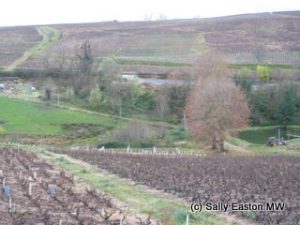Taste test: semi-carbonic versus de-stemmed fruit

Beaujolais
Schools of thought are evolving in Beaujolais, especially in the Beaujolais crus, around semi-carbonic maceration versus a Burgundian style of fermentation using de-stemmed grapes with pump-overs or punch-downs to extract colour and tannins.
To see if it is possible to begin to taste the difference between these two vinification methods, I conducted a tasting seminar for InterBeaujolais (the region’s interprofessional organisation) at the London International Wine Fair in May 2012.
I pre-tasted a selection of wines prior to the event, without looking at the accompanying technical winemaking sheets. As well as selecting the wines to use at the event, I wanted anecdotally to test my theory that it is possible to taste the difference between semi-carbonic maceration and de-stemmed fruit fermentation. At that stage I got one out of ten wrong.
Taking into account the flavour characteristics semi-carbonic maceration is known to produce, my overall conclusions are that semi-carbonic maceration wines have a bright, sometimes translucent cherry colour, with purple tones. There is a juiciness, liveliness, sappiness, succulence, and vitality to the fruit and florally fragranced flavours. Allied to these perfumed characters, there is a distinct freshness to the palate attack and a smoothness of texture that has an absence of ‘graininess’. There can be a cinnamon or clove spiciness, and there is usually absence of new oak flavours. And in this anecdotal trial, I also found an absence of savouriness (though not in the more serious semi-carbonic maceration styles); the focus is on fruit, which is not to say the wines have insufficient structure or lack degrees of complexity. For all the fruit focus, some wines show a serious strain in their core.
Below are my tasting notes of the wines shown at the Beaujolais tasting.
First pair: same producer, different vinification, different appellation, different vintage
Domaine de la Fond Moiroux, Brouilly 2010
12.5%. Medium pale cherry colour. Nose not so aromatic, savoury note on attack, and fine-dry-grained texture. Mid palate sappy and juicy, smooth and medium-weighted.
My first guess had this as serious semi-carbonic maceration (juiciness and sappiness).
Semi-carbonic maceration for 12 to 14 days at 28 to 30°C, in concrete tanks.
Domaine de la Fond Moiroux, Moulin à Vent 2009
13%. Spicy, (vanilla, clove, cinnamon), note to first nose. Palate quite savoury. Still plenty of juicy, fleshy fruits underneath, and will probably meld together with time. Doesn’t have the immediate sappy drinkability of some carbonic maceration wines.
My first guess had this as destemmed fermentation (absence of overriding sappiness).
Destemmed fruit, 15-18 day cuvaison, with pump-overs, at 28 to 30°C. Part matured in stainless steel, another part in 2-year old barrels.
Second pair: same appellation, different vintages, different producers
Domaine Ferraud, Morgon Les Charmes 2010
12.5%. Purple and cherry colour. Hint of grip at sides of palate thought texture still no-grained, really. Serious intensity to primary berry fruits, still only medium bodied but packs a big flavour punch. Freshly balanced, good
My first guess had this as semi-carbonic maceration with weight and texture.
Semi-carbonic maceration for 8-10 days. Temperature 30°C at beginning, 20°C at the end. Pressed to concrete for 4-5 months. No oak on this vintage (sometimes use old foudres for 2-3 months)
Château de Bellevue, Morgon, Les Charmes 2009
13%. From Maison Loron. No immediate juiciness and sappiness. Black cherry and black currant fruit types without the fragrant perfume of their aromas. Savoury notes, and dry tannins on the palate lay over the berry fruit. Balanced with savoury notes.
My first guess had this as de-stemmed fermentation.
Destemmed fruit. Up to 30 day cuvaison. Part-matured in oak and part in tank on fine lees for 9 months.
Third pair: same vintage, both semi-carbonic, different producers, different appellations
Château de Blaceret-Roy, Fleurie, Coteau Grille Midi, Vieilles Vignes 2010
12.5%. Purple, crunchy nose, immediately aromatic, direct with pure fruits. Cherry Tunes, strawberry bubblegum – classic semi-carbonic maceration indicators. No new oak is evident on palate – pure, crunchy fruit. Good density of sappy, succulent purpleness.
My first guess had this as classic, juicy semi-carbonic maceration.
Semi-carbonic maceration for 15-17 days.
Trenel, Chiroubles 2010
13%. Medium-deep purple-ruby colour. Bright crunchy dark cherry nose. Violets. Enticing perfume. Rich smooth entry. Big flavour hit. Not picking up new oak. Has freshness and vitality of semi-carbonic maceration, and also has spicy punch to perfumed fruit.
I knew before the initial tasting this was semi-carbonic maceration.
Semi-carbonic maceration for 8-10 days, with temperature control. Maturation half and half in oak cask and stainless steel tank for 4-5 months.



